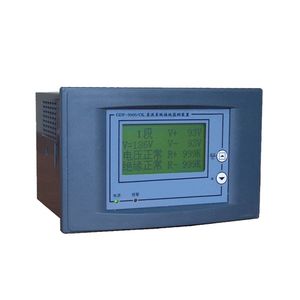
- Detection - Measurement
- Electrical Measurements
- Partial discharge monitor
- HV Hipot Electric Co., Ltd

- Products
- Catalogs
- News & Trends
- Exhibitions
Partial discharge monitor GDPD-GSW/OL
Add to favorites
Compare this product
Description
GDPD-GSW/OL Partial Discharge Online Monitoring System of Generators
I. General Information
Generally, partial discharge occurs at a position where the properties of the dielectric material are not uniform. At these locations, the local electric field strength is enhanced, and local electric field strength is too large, resulting in local breakdown. This partial breakdown is not the total breakdown of the insulating structure. Partial discharges typically require a certain amount of gas space to develop, such as gas voids inside the insulation, adjacent conductors, or insulating interfaces.
When the local field strength exceeds the dielectric strength of the insulating material, a partial discharge occurs, causing many partial discharge pulses to occur during one cycle of applying the voltage.
The amount of discharge delivered is closely related to the non-uniform characteristics and the specific dielectric properties of the material.
Significant partial discharges in the motor are often a sign of insulation defects, such as manufacturing quality or post-run degradation, but this is not a direct cause of failure. However, partial discharges in the motor can also directly damage the insulation and affect the aging process.
Specific partial discharge measurements and analysis can be effectively used for quality control of new windings and winding components as well as early detection of insulation defects caused by factors such as thermal, electrical, environmental and mechanical stresses in operation, which can lead to insulation failures.
Other HV Hipot Electric Co., Ltd products
Online Monitoring System
Related Searches
- Calibration system
- Portable testing system
- Generator
- Digital testing system
- Voltage testing system
- Manual test kit
- Precision calibration system
- Insulation testing system
- Digital calibrator
- Portable test kit
- Electrical installation tester
- Insulation resistance testing system
- Digital test kit
- Battery testing system
- Pulse generator
- Real-time detector
- Wireless detector
- Tabletop testing device
- Voltage detector
- Voltage test equipment
*Prices are pre-tax. They exclude delivery charges and customs duties and do not include additional charges for installation or activation options. Prices are indicative only and may vary by country, with changes to the cost of raw materials and exchange rates.


